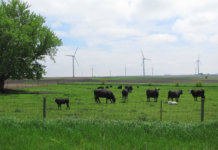 The New York State Senate and Assembly passed the Power NY Act of 2011 on June 22. This legislation ends a long-standing stalemate over power plant siting. The bill enacts a new Article X of the New York Public Service Law (PSL), replacing a statute that lapsed in 2003. The new Article X establishes a centralized certification process for electric generating facilities. All parties expect Gov. Andrew Cuomo, D-N.Y., to sign the bill into law.
The New York State Senate and Assembly passed the Power NY Act of 2011 on June 22. This legislation ends a long-standing stalemate over power plant siting. The bill enacts a new Article X of the New York Public Service Law (PSL), replacing a statute that lapsed in 2003. The new Article X establishes a centralized certification process for electric generating facilities. All parties expect Gov. Andrew Cuomo, D-N.Y., to sign the bill into law.
The legislation's reach is broad. With limited exceptions, all proposed generation projects exceeding 25 MW, regardless of fuel source, will be included in the new process. Existing facilities that seek modification can do so as long as it would not result in an increase in capacity of more than 25 MW. In addition, facilities constructed on lands devoted to industrial uses are limited to a generating capacity of 200 MW or less.
The new Article X shares many of the features of the old statute: It creates a siting board composed of state agency commissioners and public members; provides intervenor funding for municipalities and local parties; consolidates and coordinates state environmental review and permitting requirements; and provides authority for the siting board to override ‘overly burdensome’ local laws.
The legislation also addresses some matters that were unclear under the prior law. For example, it provides greater detail on issues such as coordinating permitting authority with the New York State Department of Conservation (NYSDEC) on federally delegated programs, such as the Clean Air Act.
The bill also clarifies that connecting transmission lines that do not qualify for Public Service Commission review under Article VII of the PSL will now be subject to the new Article X.
Developers should note that the siting board will not begin accepting applications until after NYSDEC promulgates regulations addressing environmental justice issues and setting standards for power plant carbon-dioxide emissions. The legislation directs NYSDEC to issue these rules within 12 months of the law's enactment. The siting board is also required to issue regulations within the same deadline.
In the interim, projects may proceed under existing law. Any projects that are under a state or local application process on or before the effective date of the new regulations will have the option to continue under that process or opt in to the new process.
Once the siting board is up and running, developers will be offered a pre-application mechanism similar to the practice under the prior law. Applicants, agencies and intervenors can stipulate the scope of the studies to be undertaken and then submitted with the application.
A project sponsor's preliminary scoping statement will be subject to public comment and review, and developers will be required to provide intervenor funding to ensure substantive public participation in the pre-application phase.
The legislation describes the information that will be reviewed as part of the permitting process and the evaluations that the siting board must make in considering an application. Project developers will be asked to submit information on facility design, environmental and health impacts, economic factors and available alternatives, as well as a determination of any disproportionate impact on a community that would give rise to environmental justice concerns. Developers must also provide additional intervenor funds in the application phase, at least half of which is to be disbursed to municipal parties.
The bill sets a one-year time frame for review and action on a completed application, but the siting board has authority to extend the schedule by another six months.
Expedited processing of an application is available when an existing major electric generating facility would like to expand or add a new facility adjacent to the existing facility, so long as the project results in a reduction in adverse air and water impacts and an improved heat rate.
The new Article X will also require the siting board to make specific findings. Many of these evaluations address the same issues that were assessed under the prior law. Several relate to the identification of the expected environmental impacts of a project. As part of its overall decision, the siting board must be able to conclude that adverse impacts have been avoided or minimized to the maximum extent practicable.
The legislation also requires the siting board to determine whether a project serves the public interest and that it is a ‘beneficial addition to or substitution for’ other electrical generation. This latter standard is new and will have to be interpreted by the siting board, either in its own rulemaking or in future cases.
In addition, the new Article X makes provisions for post-decision challenges and imposes procedural and substantive limits on potential claims. The bill prohibits the use of intervenor funds for litigation purposes. It also provides that aggrieved parties must seek rehearing with the siting board before approaching the courts.
Judicial challenges must be brought in the courts of the Appellate Division, bypassing the trial-court level, within 30 days from the issuance of the siting board's decision on the application for rehearing. The bill also provides for deferential review under the ‘substantial evidence’ standard.
Finally, the new Article X largely divests the state courts of jurisdiction to determine any cases that seek to stop or delay construction of a generation facility that has received a certificate from the siting board.
Energy project developers and financiers may see numerous advantages to the new Article X process, as it provides a clear road map to guide the decision-making process and puts some restrictions on project opponents' ability to delay certificated projects through litigation.
At the same time, there are new elements to the legislation that will need to be developed and interpreted by the siting board through its own rulemaking process over the next 12 months. Developers looking to participate in project siting in New York should pay close attention to the siting board's next steps.
Elizabeth Grisaru is counsel and Terresa Bakner is a partner at Whiteman Osterman & Hanna, an Albany, N.Y.- based law firm. They can be reached at egrisaru@woh.com and tbakner@woh.com.



